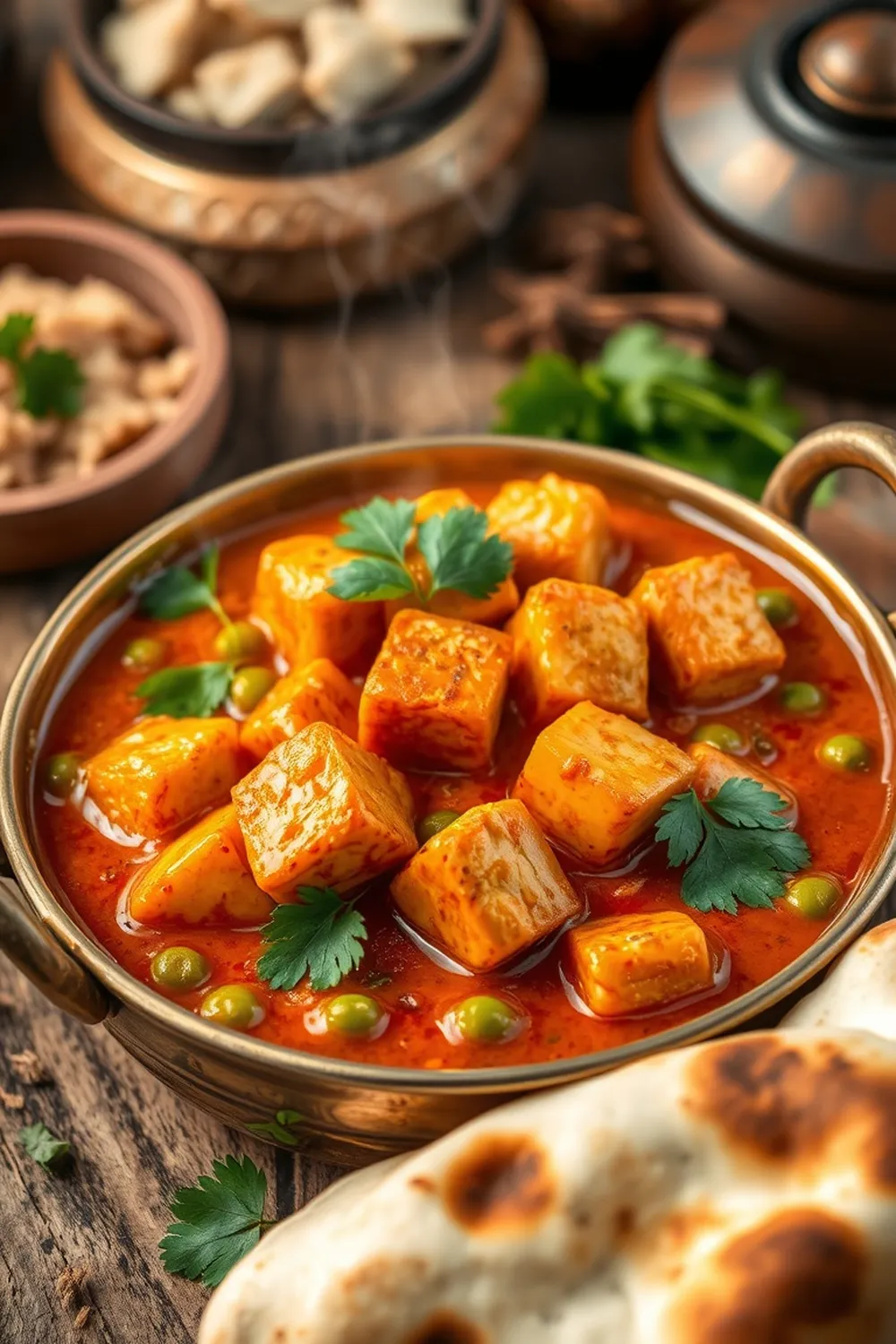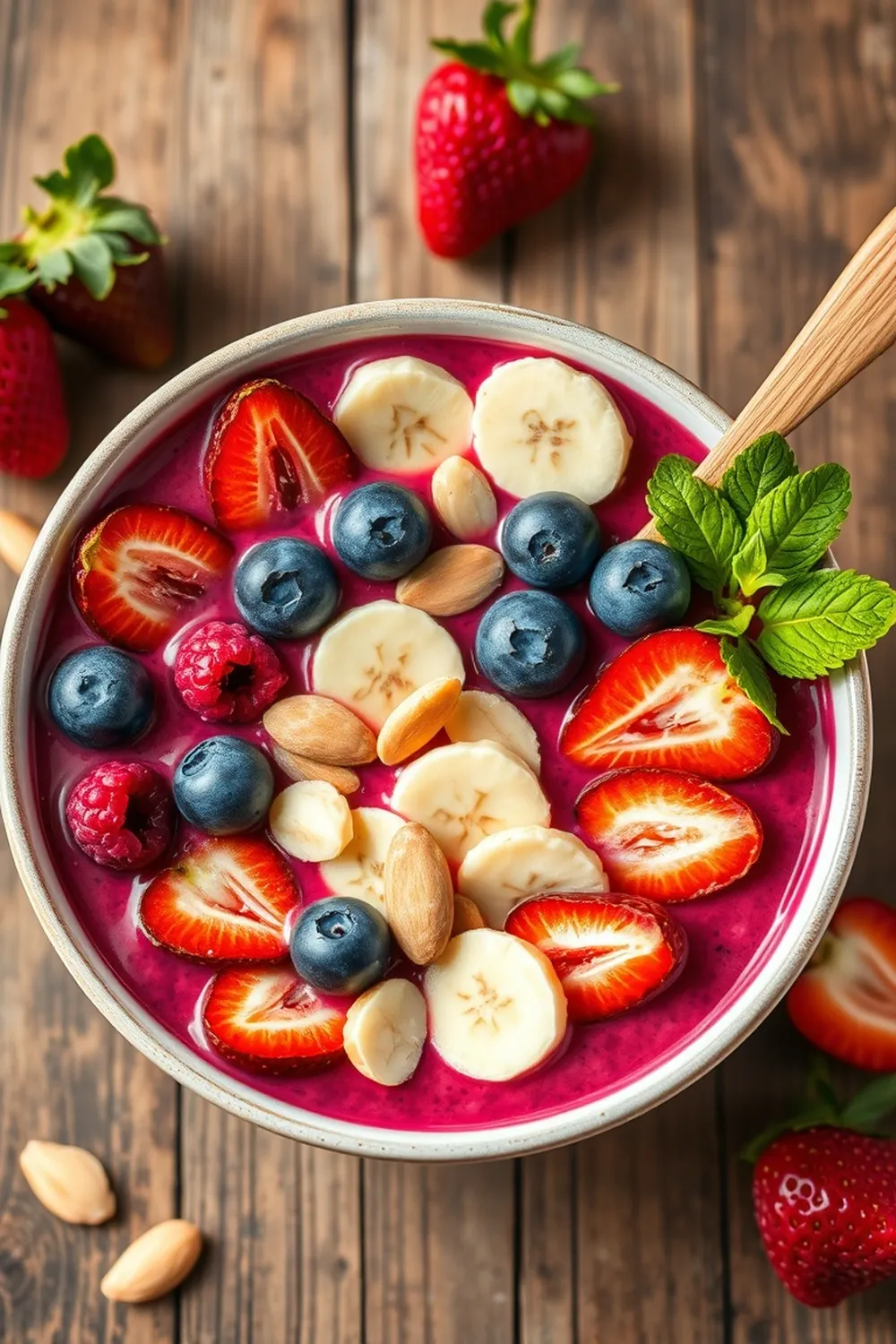- Soak ragi, pearl millet, green gram, and wheat overnight. Rinse, drain, and sprout, covering with a damp muslin cloth, for 24-48 hours.
- Dry sprouted grains thoroughly. Dry roast each grain type separately until aromatic.
- Separately roast parboiled rice, fried gram (chana dal), barley, sago, dry ginger powder, and almonds.
- Grind all roasted ingredients into a fine powder. Store in an airtight container.
- For sweet porridge: Mix 1.5 tbsp powder with 3/4 cup water. Cook on low heat, stirring constantly, until thickened. Stir in jaggery and milk.
- For savory version: Cook 2 tbsp powder with 1 cup water. Cool, then mix with salt and buttermilk.
- Calories:180 kcal25%
- Energy:753 kJ22%
- Protein:6 g28%
- Carbohydrates:32 mg40%
- Sugar:8 mg8%
- Salt:15 g25%
- Fat:3 g20%
Last Updated on 4 months by Neha Deshmukh
Ragi Porridge Recipe – Sprouted Millet & Jaggery Sweet Porridge
Introduction
There’s just something so comforting about a warm bowl of porridge, isn’t there? Especially when it’s packed with goodness and tastes absolutely delicious! This Ragi Porridge (or Sathu Maavu Kanji as it’s often called) is a family favorite in my home. I first made this when my little one was starting solids, and it’s been a staple ever since. It’s incredibly nourishing, easy to digest, and honestly, just feels like a warm hug in a bowl. Let’s get into how you can make this incredibly wholesome porridge!
Why You’ll Love This Recipe
This isn’t just any porridge. It’s a powerhouse of nutrients thanks to the blend of sprouted millets and grains. It’s perfect for babies, growing kids, or anyone looking for a healthy and satisfying breakfast or snack. Plus, the subtle sweetness from the jaggery and creamy touch of milk make it utterly irresistible. It’s a traditional South Indian recipe, but honestly, everyone should have this in their repertoire!
Ingredients
Here’s what you’ll need to make this delightful Ragi Porridge:
- 1/4 kg Finger millet/Ragi
- 1/4 kg Pearl millet/Kambu
- 1/4 kg Green gram
- 1/4 kg Wheat
- 1/4 kg Parboiled rice (pulungal arisi)
- 100 grams Fried gram/Pottukadalai
- 100 grams Barley
- 50 grams Sago/Jevvarisi
- 2 inch piece Dry ginger/Sukku
- 25 grams Almonds
- 1.5 tbsp Porridge powder (made as per instructions below)
- 3/4 cup Water
- 1 tbsp Powdered jaggery (or to taste)
- 1 cup Milk
Ingredient Notes
Let’s talk about some of these ingredients – they’re what make this porridge so special!
- Ragi/Finger Millet: This is the star! Ragi is incredibly nutritious, packed with calcium, iron, and fiber. It’s fantastic for bone health and digestion.
- Kambu/Pearl Millet: Another millet powerhouse! Kambu is great for energy and helps regulate blood sugar levels.
- Pulungal Arisi/Parboiled Rice: Using parboiled rice makes the porridge easier to digest. It also adds a lovely texture.
- Sukku/Dry Ginger: Don’t skip this! Dry ginger adds a wonderful warmth and is excellent for digestion and immunity. A little goes a long way.
- Sprouting: Sprouting the grains is key. It increases the bioavailability of nutrients, making them easier for your body to absorb. Plus, it makes the porridge lighter and easier to digest.
Step-By-Step Instructions
Okay, let’s get cooking! This recipe has two parts: making the porridge powder, and then making the actual porridge.
- Sprout the Grains: Start by soaking the ragi, pearl millet, green gram, and wheat overnight.
- Rinse & Drain: The next morning, rinse and drain them well.
- Sprout Time: Place the soaked grains in a muslin cloth and leave them to sprout for 24-48 hours, rinsing them every 8-12 hours. You’ll see little tails starting to emerge – that’s what you want!
- Dry Roast: Once sprouted, spread the grains out on a clean kitchen towel and dry them thoroughly. This is important to prevent clumping. Then, dry roast each grain separately (ragi, kambu, green gram, wheat) in a pan until aromatic. Set aside.
- Roast the Rest: Separately roast the parboiled rice, fried gram, barley, sago, dry ginger (broken into smaller pieces), and almonds until lightly golden and fragrant.
- Grind it Up: Let everything cool completely. Then, grind all the roasted ingredients into a fine powder using a grinder or mixer.
- Store the Powder: Store the powder in an airtight container. It will stay fresh for a couple of months.
- Make the Porridge (Sweet): To make the sweet porridge, mix 1.5 tbsp of the powder with 3/4 cup of water in a saucepan.
- Cook & Sweeten: Cook on low heat, stirring constantly, until the porridge thickens. Stir in the powdered jaggery and milk. Cook for another minute or two until everything is well combined.
- Serve & Enjoy: And that’s it! Your warm, comforting Ragi Porridge is ready to enjoy.
Expert Tips
- Roasting is Important: Don’t skip the roasting step! It enhances the flavor and makes the powder last longer.
- Water Consistency: Adjust the amount of water to get your desired porridge consistency. I like mine a little on the thicker side.
- Cooling Completely: Make sure all the ingredients are completely cool before grinding. Otherwise, the powder might become sticky.
Variations
This recipe is super versatile! Here are a few ways to customize it:
- Vegan Adaptation: Simply substitute the milk with your favorite plant-based milk like almond milk or coconut milk.
- Gluten-Free Adaptation: Ensure the wheat used is certified gluten-free. You can also replace the wheat with more ragi or another gluten-free grain like quinoa.
- Adjusting Sweetness: Feel free to adjust the amount of jaggery to your liking. You can also use honey or maple syrup as a substitute. My grandma always used to add a pinch of cardamom for extra flavor!
- Savory Porridge Variation: For a savory version, cook 2 tbsp of powder with water. Cool, then mix with salt and buttermilk. Garnish with chopped coriander leaves. This is my husband’s favorite!
- Festival Adaptations – Pongal/Makar Sankranti: This porridge is often made during Pongal and Makar Sankranti. You can add a little ghee and some roasted cashews for a festive touch.
Serving Suggestions
This Ragi Porridge is delicious on its own, but you can also serve it with:
- A sprinkle of nuts and seeds
- Fresh fruits like bananas or berries
- A dollop of ghee (for extra richness)
Storage Instructions
- Porridge Powder: Store the porridge powder in an airtight container at room temperature for up to 2 months.
- Cooked Porridge: Cooked porridge is best enjoyed fresh. However, you can store leftovers in the refrigerator for up to 24 hours. Reheat gently before serving.
FAQs
- What are the health benefits of ragi porridge? Ragi is incredibly nutritious, offering a wealth of calcium, iron, fiber, and antioxidants. It’s great for digestion, bone health, and energy levels.
- Can I use a different type of millet? Absolutely! You can experiment with other millets like foxtail millet (kangni) or little millet (kutki).
- How do I know when the sprouts are ready? You’ll see small tails emerging from the grains. They don’t need to be super long – just visible.
- Can this porridge be made ahead of time? You can make the porridge powder ahead of time and store it. The actual porridge is best made fresh, but leftovers can be refrigerated.
- What is the best way to store the porridge powder? An airtight container in a cool, dry place is best. This will keep it fresh and prevent it from absorbing moisture.










